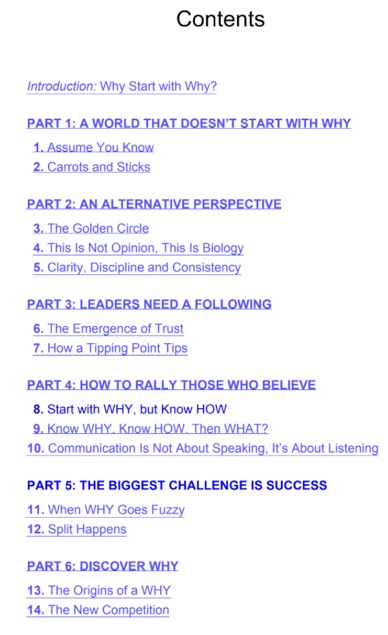Business Book Review: ‘Start with Why: How great leaders inspire everyone to take action’ by Simon Sinek
19/06/2018

Summarised by Keith Thompson
Introduction
[su_row][su_column size=”2/3″]Why do you do what you do? This is the key question Simon Sinek asks in his bestselling book. In this book, Sinek addresses what many leaders and managers within organisations I think are missing. “Start with Why” addresses what is essentially an organisation’s purpose, why does it exist, what need does it fulfil or what problem does it solve?
Sinek talks about great people such as Martin Luther King, Steve Jobs and the Wright brothers in trying to discover what, in a range of disparate people, made then so successful, innovative and influential.
Sinek became famous or infamous through a 20-minute TED Talk (video below) on the same subject. The TED Talk essentially covers the content of the book. However, the book has many more examples and stories such as Sam Walton of Walmart, Herb Kellerman of South West Airlines and Bill Gates of Microsoft. At the expense of becoming repetitive, all these examples drive home his key point – Start with Why.
[/su_column] [su_column size=”1/3″] [/su_column][/su_row]
[su_youtube url=”https://youtu.be/hGn1xcZc9yA”]
[/su_column][/su_row]
[su_youtube url=”https://youtu.be/hGn1xcZc9yA”]
The initial parts of the book maintain a remarkable similarity to the TED talk, but the examples in the latter portion show how great leaders change the face of their companies by focusing on “Why”.
Sinek introduces a tool that he has developed called the Golden Circle. This tool effectively centres around Purpose or Why. The Golden Circle is an alternative way of looking at Mission Command / Centralised Intent – subjects of some of our recent blogs.
[su_row][su_column size=”1/2″] The tool can work two ways.Most organisations probably know “What” they do. In parts of those organisations some will know “How” they do it. But very few people in these organisations will know “Why” they do it. So you can eventually get to Why through starting with What and then How.
[/su_column] [su_column size=”1/2″]
Used the other, and arguably more powerful, way we start with Why we are going to do something. When we know Why, we can then go on to develop How we do something and once we know How we will know What to do maintaining a clear line sight to the Purpose or Why.
[su_youtube url=”https://youtu.be/Wb8KpHqU5tg”]Consisting of 14 chapters, in six effective parts, it is very easy to read in a day or over the weekend. Following on from his book Sinek has written two further books – the second, on a similar theme, entitled “Find your Why” and his third entitled “Leaders Eat Last”

Categories & Tags:
Leave a comment on this post:
You might also like…
From nature walks to neural networks: My journey in Applied AI at Cranfield
Hi, I’m Ebru K and choosing a postgraduate degree is about more than just picking a subject; it’s about choosing where your future begins. As an international student from Turkey, I ...
Leading With Heart: My Journey as Cranfield Student Association President by Summer Yan
When I first arrived at Cranfield, I had no idea that one year later I would be standing at the heart of our student community, serving as President of the Cranfield Student Association (CSA). ...
Creating and using constituent lists in Datastream
Whether you're analysing industry performance, or comparing company financials, Datastream is a powerful tool. One of its most useful features is the ability to work with constituent lists — collections of companies grouped by index, ...
Landing at Cranfield: First-term experiences and life beyond the classroom
Starting a postgraduate course can feel daunting, especially if you’re new to the aviation industry. In this blog series, Adit Shah shares his journey on the Air Transport Management MSc at Cranfield. From first-term ...
Accelerating ambition: How Amelie Rohan engineered her future at Cranfield
In the world of high-performance automotive engineering, the gap between being a “fan” and being a professional is measured in more than just miles. It is measured in technical precision, hands-on ...
Study better and smarter in 2026
Happy new year! Now is the perfect time to reflect on your studies so far, thinking about what you’re doing well and where you need to focus a bit more attention. Getting back into ‘study ...






